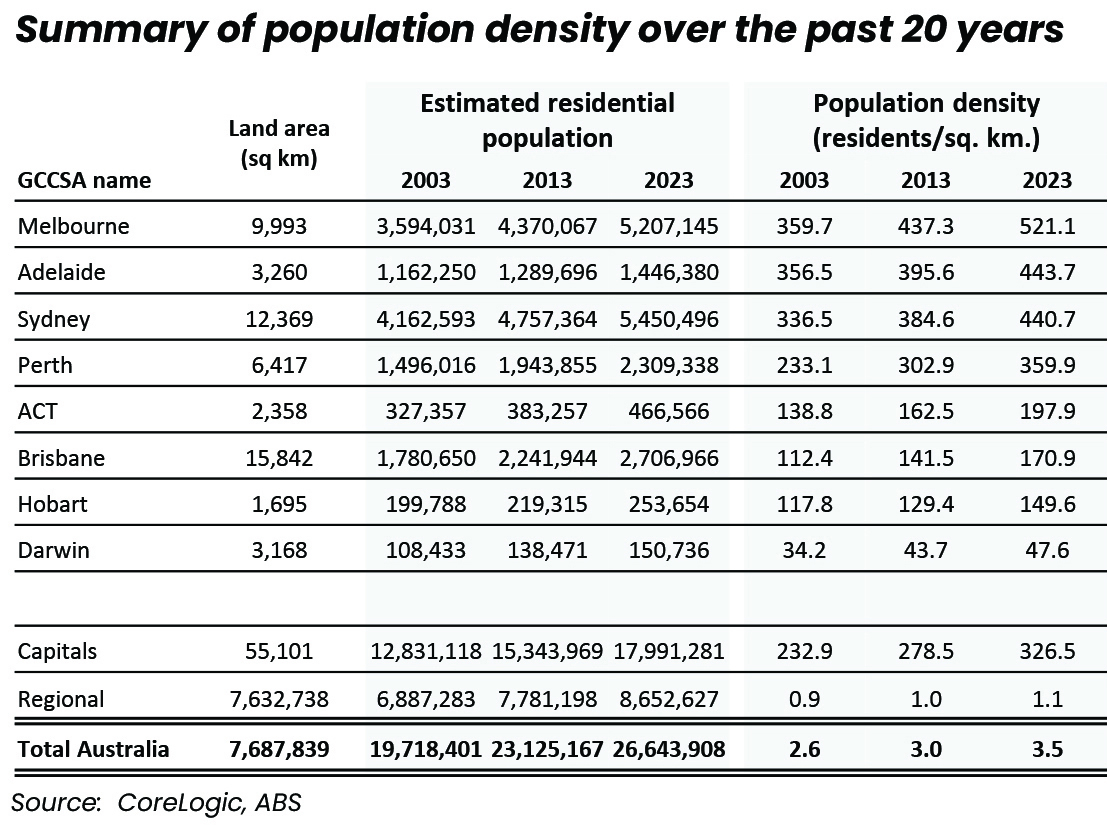With Australia’s population moving through the fastest rate of growth since the 1950’s, our cities and towns are naturally densifying.
At a national level, the population density of 3.5 people per square kilometre (sq. km) is among the lowest in the world, highlighting our highly urbanised population where half the populace live in the three largest cities. In fact, 75% of Australia’s population resides on just 2.6% of the land mass.
The density of the population, which is simply the number of residents divided by the land area, becomes more relevant at a city level and even more interesting across smaller areas.
Below is a snapshot of key findings from this analysis.
1. Melbourne has the highest population density across the capital cities (521 people per sq.km), followed by Adelaide (444 ppl per sq. km) and Sydney (441 ppl per sq. km). Despite Sydney having a larger portion of medium to high density housing stock and generally smaller blocks of land, the larger land area of the Sydney metro region contributes to its lower population density.
2. Every capital city is recording a rise in population density, however the way this is occurring is quite different from region to region.
3. The inner-city precincts of Melbourne and Sydney dominate the highest density locations nationally, however the density rankings have changed remarkably over the past 20 years. Outside of Sydney and Melbourne, the regions with highest population density nationally were in Brisbane (Fortitude Valley), the Gold Coast (Surfers Paradise – North was ranked 97th) and the ACT’s Kingston (107th).
4. The relationship between population density and rental growth is weak. For units, areas with a high population density have shown slightly stronger rental appreciation relative to lower population density areas, but slightly weaker growth over the past decade. For house rents it's the opposite, where higher population densities have been associated with slightly weaker rental appreciation than areas with a lower population density over the past 12 months, but slight stronger over the past decade.
6. The relationship between unit values and population density is more significant, with high density unit markets generally showing a lower level of value growth over both the past 12 months, and past 10 years – although the longer- term relationship is more significant, potentially reflecting periods of higher unit supply that weighted on value appreciation.
7. High population densities provide virtually no explanatory power for house values with the coefficient of determination just .001 over the past 12 months and over the past decade.

